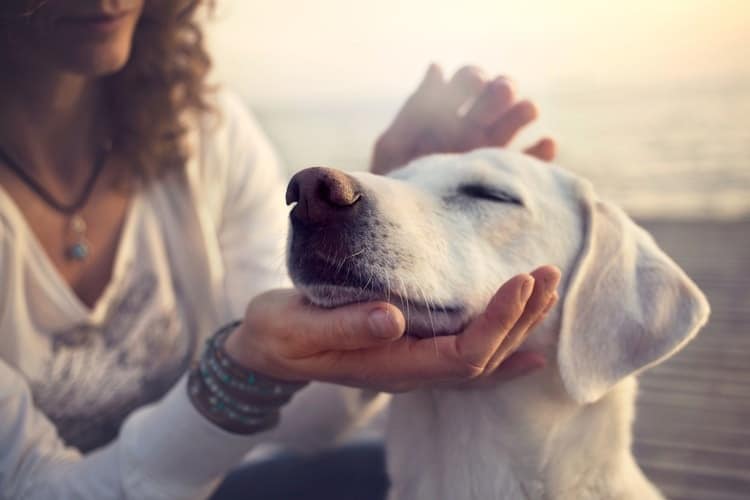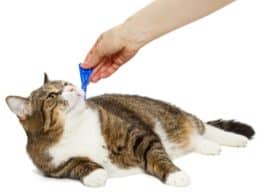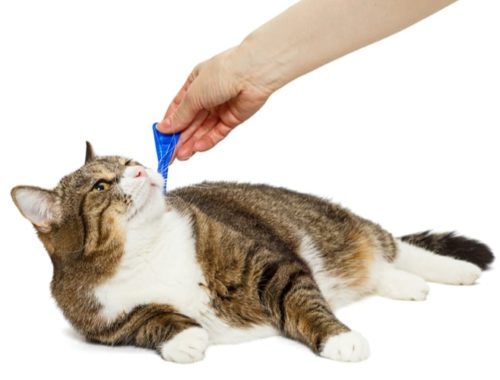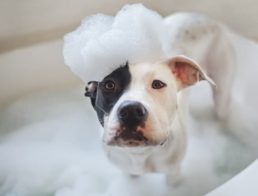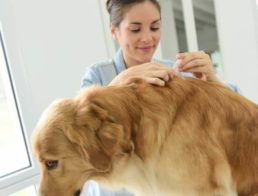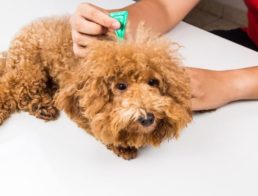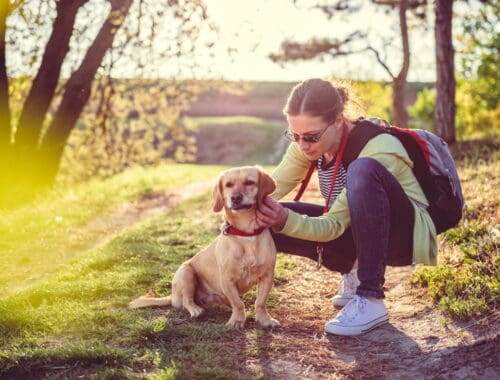It can be so hard to see your loved ones in discomfort, even if that loved one is your family dog. The stress of it can even make you second guess what you probably already know you should do. That can certainly be the case for when your pooch has a flea infestation. To take some of that worry off of you, we’ve compiled a simple list of suggestions and recommendations for you. You’ll find that you have a few options and after reading up a bit on them, you’ll be better equipped to take on your family’s new interlopers.
1. Identify the Problem
The biggest indicator that your dog has fleas is a pretty obvious one: If you find him scratching or biting himself. You may find he also shows signs of restlessness or constant licking. Consider: what would you do if you had something on you and had no thumbs to get them off? If you find his actions consistent with your hypothetical ones, dig a little deeper.
Use a flea comb (like Safari Flea Comb with a Double Row of Teeth) to get a closer look at his skin to find any black specks (adult fleas) or white eggs. Check your dog’s ears and stomach closely (here’s how you clean your dog’s ears the right way); these places are often red and irritated. He could also be losing his hair, or his gums could be paler than normal (anemia is a common side effect of fleas and will cause pale gums). The bites themselves may even be visible. If you or your kids are often around your dog, then another strong clue is a cluster of small bites around the human’s ankles.
2. Find the Source
If you don’t know where the fleas are coming from, then you can’t stop their influx into your life. Keep in mind that though they very likely came from somewhere outside, they may have made themselves quite at home in your house. Fleas like to set up shop in carpet, bedding (that includes pillows), carpets (the plusher, the better), and furniture. They breed and lay their eggs in these places most commonly, but you will sometimes find their primary home is your pet. If the infestation is too advanced, it may be a simple matter of getting rid of some of the more likely offenders. Dog beds, for example, are often first on the chopping block.
If the source is the yard, then eliminating their “home base” inside your home will do you very little good; you’ll need to eliminate the possibility of your dog bringing them in again. That could be finding a good preventative treatment for him, or finding a yard spray that will clean your yard of their presence. Most likely it’ll be a combination of those two options as that will provide you with the most protection.
3. Scrub-a-Dub-Dub
Wash it all. That may be a general statement, but the truth is, the more you wash, the more likely you are to get rid of the problem. Anything your dog comes in contact with will need to be cleaned. Whether that’s popping it in the washer, or finding a good carpet and upholstery shampooer, the more thorough you are, the less your family will itch in the long run.
Along with that, your dog needs to be washed regularly with a good flea shampoo. Your carpets, beds, and furniture will need to be cleaned. To kill the fleas, a simple vacuuming may be enough. Some studies have shown that vacuuming alone kills 96% of fleas. Researchers hypothesize that the brush on vacuums strips away the protective outer layer of fleas in all stages of life, causing them to dry up and die.
4. Try Natural Eradication Methods
We want to be upfront: the natural ways to eradicate fleas are typically less effective and work over a longer period of time. However, they’re generally safer for your pet and your family, so you’ll want to weigh the pros and cons specifically for your situation. There are several oils and scents that can help your flea problem; Rosemary oil in a flea dip, spraying your dog and home with a lemon spray, and even applying lavender essential oil directly to your dog. You can also use apple cider vinegar directly on your dog, feed him brewers yeast to make him taste unappealing, and warm soapy water to lure fleas to their deaths.
Any kind of boric acid-based product can be sprinkled on the carpet to kill fleas (but it’s safe for humans). Nylar is a unique product that doesn’t kill or repel fleas, but rather stops their growth, preventing them from reproducing. You’ll spray it on your tile, hardwood, and linoleum, and it will last for an entire year.
5. Consider Chemical Eradication
As with most chemicals you use within your home, you’ll need to be careful of what you put where to keep your family safe. The chemical option is often the fastest and most effective, and it has the distinction of offering a hands-off option: Hiring a professional. They won’t treat your dog, but they will guarantee their work in your house and in your yard, which means it’s a worry-free option. While they’re working on their areas, you can simply give your dog a thorough bath to make sure he’s flea-free, and when you return to your home, you’ll all be safe from bites (or the exterminators will come back or give you your money back).
If you opt to do it yourself, there are several options, and your best bet is some kind of combination of them. You can give your dog a pill like Novartis Capstar which will start working to kill most adult fleas within four hours or use a flea collar to kill the fleas on your dog. There is also a home spray to kill adult fleas on and in your carpet within 10 minutes. Finally, there are foggers to “bomb” your house, but keep in mind that these are typically reserved as a last resort, as there are other methods that are more practical – and even more effective – these days.
Getting rid of fleas is not a simple matter, so you want to make sure you’re taking every possible step to make sure they never come inside your home or get on your dog, to begin with. Just remember while you’re fixing the problem, prevention is far easier than eradication – so keep up on your flea prevention by getting flea collars for your dog, and monitoring your yard closely.


